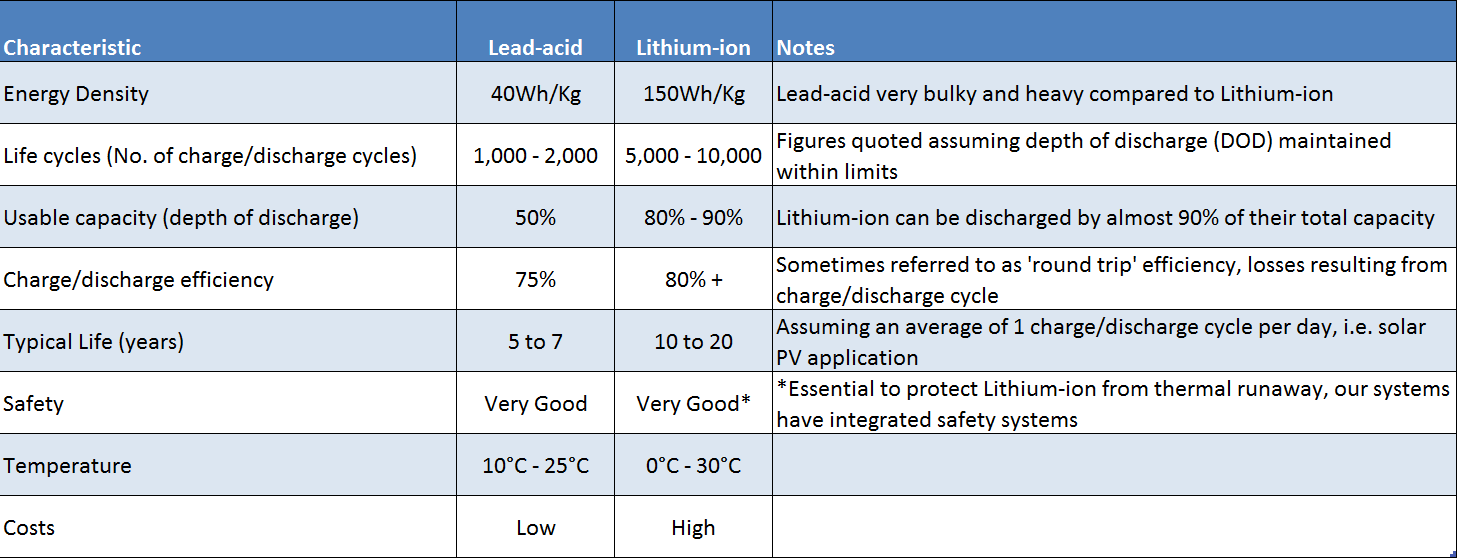Battery technologies
There are many different types of battery all with various characteristics and uses. For solar PV systems, there are two major technologies in popular use, namely Lead-acid and Lithium-ion.
3.1 Lead-acid
Lead-acid batteries have been around for more than 150 years. Commonly used in cars, they have high ‘cranking power’ and are primarily used to start the engine via an electric starter motor. They are relatively low cost but are very bulky and heavy compared to other technologies of similar storage capacity. One major design consideration of Lead-acid batteries is their ‘usable capacity’ which is typically only 50% of their rated capacity. This means that you will only use half of the stored energy in the battery so as to preserve its life expectancy.
3.2 Lithium-ion
Lithium-ion batteries are commonly used in small electronic applications such as mobile phones and laptop computers. Compared to Lead-acid, they have a better shelf life (holding a charge when not in use), less weight and bulk for a given storage capacity, higher usable capacity (80% - 90%) and a longer life expectancy. The major disadvantages with Lithium-ion are managing their thermal characteristics for safety purposes and their costs compared to others.
A summary of Lead-acid compared to Lithium-ion is shown in the table below: -
Table 1 – Lead-acid vs Lithium-ion batteries

